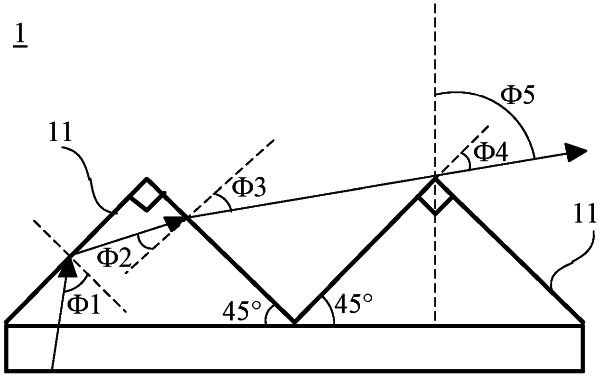| CPC G02B 6/0051 (2013.01) | 19 Claims |

|
1. A dimming assembly, comprising:
a first prism having a first surface and a second surface opposite to each other, the first surface including a plurality of first dimming portions, each first dimming portion including two first side surfaces, and edges of the two first side surfaces away from the second surface intersecting at a first intersection line; and
a second prism disposed on a side where the second surface of the first prism is located, a surface of the second prism proximate to the second surface including a plurality of second dimming portions, each second dimming portion including two second side surfaces, and edges of the two second side surfaces proximate to the second surface intersecting at a second intersection line, wherein
a distance between orthographic projections of two adjacent first intersection lines on the second surface is less than a distance between orthographic projections of two adjacent second intersection lines on the second surface; and
an acute angle between an extending direction of an orthographic projection of the first intersection line on the second surface and an extending direction of an orthographic projection of the second intersection line on the second surface is greater than 0 degrees and less than 10 degrees.
|